Be sure to Click LIKE at the bottom of this article, and share it everywhere!! By Craig Andresen – The National Patriot and Right Side Patriots – Commentary
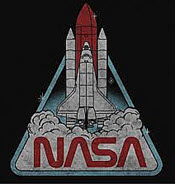 Since the end of the Space Shuttle, NASA has relied primarily on the Russians for transport into space. Our astronauts had to hitch rides on Russian spacecraft just to get to and from the International Space Station (ISS) but that wasn’t the only part of our space program that was connected to Russia.
Since the end of the Space Shuttle, NASA has relied primarily on the Russians for transport into space. Our astronauts had to hitch rides on Russian spacecraft just to get to and from the International Space Station (ISS) but that wasn’t the only part of our space program that was connected to Russia.
The Atlas 5 program had also become reliant on Russia for engines used to launch NASA and other satellites into space.
While the Atlas 5 has been reliable as a launch vehicle; it is somewhat of an antique in the space industry. The Atlas 5 was the launch platform for Mercury missions in the early 1960’s that first took U.S. astronauts into space making the launch vehicle now a working museum piece of sorts.
For now, there are some 26 Atlas 5 rockets still in the NASA inventory, all of which have been dedicated to specific satellite launch missions and all of which are powered by RD-180 engines manufactured by and purchased from the Russians. While the RD-180 engines are proven and reliable, having been used by NASA for the better part of a decade, thanks to Russia’s invasion of Ukraine, and our nation’s sanctions against Russia, issues have arisen.
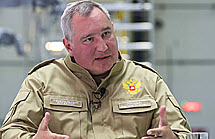 Dmitry Rogozin, the head of Roscosmos, Russia’s space agency says that Russia will no longer provide the RD-180 rocket engines for purchase by the United States, nor will Roscosmos continue to provide maintenance for those engines.
Dmitry Rogozin, the head of Roscosmos, Russia’s space agency says that Russia will no longer provide the RD-180 rocket engines for purchase by the United States, nor will Roscosmos continue to provide maintenance for those engines.
Rogozin said a couple of weeks ago, on Russian television and in a tweet, “In a situation like this we can’t supply the United States with our world’s best rocket engines. Let them fly on something else, their broomsticks, I don’t know what.”
The United Launch Alliance (ULA) which is one of two providers certified to launch national security space missions on the Atlas 5 responded to Rogozin’s statement by saying that we currently have enough RD-180 engines to complete all Atlas 5 launches and that the Atlas 5 program is set to be retired completely by 2025 anyway. As for the maintenance of those Russian engines, ULA CEO Tory Bruno said the company has “developed considerable experience and expertise” to troubleshoot any unexpected engine issues without Russia’s assistance.
That’s good to know, and it should also be known that since 2016, there’s been a congressional directive to eliminate reliance on the Russian-made propulsion system by 2022. That’s this year. Thanks you President Trump for having the foresight to put America first.
ULA and that companies CEO, Tory Bruno weren’t the only ones to respond to Dmitry 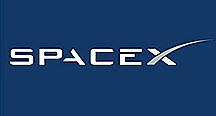 Rogozin’s bombastic tweet – “In a situation like this we can’t supply the United States with our world’s best rocket engines. Let them fly on something else, their broomsticks, I don’t know what,” as Elon Musk replied directly TO that tweet with a photo of the SpaceX logo. No words, just the logo.
Rogozin’s bombastic tweet – “In a situation like this we can’t supply the United States with our world’s best rocket engines. Let them fly on something else, their broomsticks, I don’t know what,” as Elon Musk replied directly TO that tweet with a photo of the SpaceX logo. No words, just the logo.
While the Atlas 5 program IS set for retirement, it is also set to be replaced by ULA and NASA’a new Vulcan Centaur launch vehicle which sounds like something Gene Rodenberry thought up, and which is set for its first flight later this year after a few setbacks over the past year, but that’s hardly the end of the story.
Elon Musk’s SpaceX also has secured a 5 year contract through 2027 to fly national security missions on behalf of ULA and NASA using their Falcon 9 and Falcon 9 Heavy vehicles and that brings up yet another reason that NASA, ULA and SpaceX can give Russia the proverbial space finger.
While the Vulcan Centaur engines are U.S. made by ULA, and because ULA has a 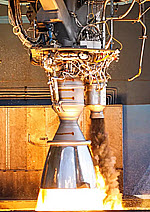 pedigree as the offspring of such notables as Lockheed Martin, Boeing, Boeing Defense, Space & Security, AND Lockheed Martin Space, SpaceX is also American made and is using Merlin 1D rocket engines manufactured BY SpaceX. Those Merlin engines are, by the way, reusable making the cost of launches much less than the Russian RD-180 engines which are NOT reusable.
pedigree as the offspring of such notables as Lockheed Martin, Boeing, Boeing Defense, Space & Security, AND Lockheed Martin Space, SpaceX is also American made and is using Merlin 1D rocket engines manufactured BY SpaceX. Those Merlin engines are, by the way, reusable making the cost of launches much less than the Russian RD-180 engines which are NOT reusable.
For comparison, the Russian RD-180 engines cost roughly $9.9 million apiece and they are one and done. SpaceX Merlin engines have a price tag of roughly $1 million dollars apiece and they ARE reusable over and over again but wait, there’s more.
Elon Musk’s SpaceX has also developed the Raptor engines, made right here in the good ol’ USA and those engines, also reusable over, and over, and over again come in at a cost of roughly $1 million per, but under Musk’s plan of mass producing 500 Raptor engines every year, that cost drops to a staggeringly low $250 thousand per unit for the first flight, and dramatically less than that as they are reused up to 50 times for each engine.
By the way, the Raptor engines are being designed not only for the SpaceX Starship program, but will also be able to be used on future Falcon missions replacing the already cost effective Merlin engines.
Now consider this – The Raptor engines are WAY more efficient than are the Russian RD-180 engines meaning that they produce a much greater thrust to weight ratio. In fact, the Raptor-2 engine has 2.5 times the thrust to weight ration than the Russian RD-180. The following video explains the difference in a nutshell.
So, the collaboration between NASA, ULA and SpaceX means as far as satellite launches are concerned, there is no further need for any reliance on Russia to get payloads into space, but what about other aspects of our nation’s space program?
For a good number of years, since the retirement of the Shuttle program, NASA HAD to rely on Russia to get our astronauts to the space station and return them to earth. Well, SpaceX now has that in THEIR purview as they have successfully launched and returned astronauts on several occasions aboard their Crew Dragon transport system. SpaceX however isn’t the only human transport system available for U.S. astronauts, as Boeing and NASA are just about ready to fly the Artemis with the goal of taking astronauts to the moon, and also using the program as a shuttle of sorts for cargo related not only to our lunar return, but also for resupplying the ISS with material and people. Combined with SpaceX, the need for the American space program to rely on Russia has a very short future, but what else might Russia do to gum up the works?
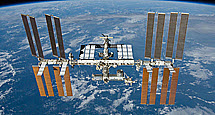 Remember, the ISS is built of individual modules, all of which were launched in the payload bay of Shuttles beginning 20 years ago. The Russian Orbital Segment (ROS) hosts the station’s complete service center and is composed of 6 separate Russian modules that provide guidance, navigation, electrical power, storage, propulsion, all of it being controlled by Roscosmos in Russia. What would happen if Russia decides to pull the plug on the ROS, or simply detach it from the ISS?
Remember, the ISS is built of individual modules, all of which were launched in the payload bay of Shuttles beginning 20 years ago. The Russian Orbital Segment (ROS) hosts the station’s complete service center and is composed of 6 separate Russian modules that provide guidance, navigation, electrical power, storage, propulsion, all of it being controlled by Roscosmos in Russia. What would happen if Russia decides to pull the plug on the ROS, or simply detach it from the ISS?
To be clear, they have already threatened to do just that, but is there an alternative? Yes. SpaceX and Elon Musk have said that they can protect the International Space Station (ISS) if Russia and Roscosmos reneged on its commitments and chose to let it crash back to earth. From time to time, Russia uses one of their cargo ships to boost the ISS orbit so that it won’t fall victim to the earth’s gravity, but Musk says that a Crew Dragon can easily be used for the same purpose. Imagine a different scenario in which Musk and SpaceX build a one-off Starship that could connect to the ISS and be used as living quarters, a central control system and expanded lab space for experiments to be carried out on the ISS.
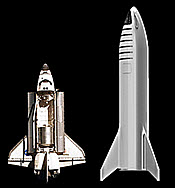 When you compare the size of what had to fit inside the Shuttle cargo bay to the size of a SpaceX Starship, the possibilities are staggering and don’t think for one minute that this scenario isn’t on the drawing board at SpaceX right now.
When you compare the size of what had to fit inside the Shuttle cargo bay to the size of a SpaceX Starship, the possibilities are staggering and don’t think for one minute that this scenario isn’t on the drawing board at SpaceX right now.
But what about the cost of all of this? Well, clearly, as for now, Russia is the biggest monetary partner with us in the ISS but they’re not our only partner. The ISS is a combination of us, Canada, Japan, the Russian Federation, , and eleven Member States of the European Space Agency Belgium, Denmark, France, Germany, Italy, The Netherlands, Norway, Spain, Sweden, Switzerland and the United Kingdom. I say we simply take Russia OUT of that mix, and ask the rest of the players to step things up to offset the costs. If we go back to energy independence and start supplying Europe and others with cost effective gas and oil, which we can certainly do once the Biden regime is out of power, those countries can chip-in a larger portion of the ISS costs.
We can also bring in other free nations, like Israel and at that point…sky’s the limit.
The collaboration of NASA, Boeing, ULA and SpaceX clearly doesn’t need Russia and given Russia and Putin’s bent on committing genocide and threats against the whole of Europe, let Russia hitch their sorry space program to the ilk of China and good luck to them.
Russia lost the first space race and they’re taking themselves out of this one. We’re heading back to the moon, we have our sites set on getting to Mars, we are already exploring deep space with space-based telescopes and when you take the tried and true capabilities of NASA, Northrop Grumman, Boeing, ULA and Lockheed Martin and add in the innovation and drive of SpaceX and their ability to turn visionary ideas into reality while other private space ventures continue to progress into the realm of becoming more than just niche players…keeping Russia as a partner just doesn’t make sense.
 Hey Russia…don’t make empty threats where our space program is concerned, Thanks to new Partnerships and President Trump’s America first policies, we need you like the ISS needs a screen door, and don’t let it hit you on your way OUT of the 21st century space race.
Hey Russia…don’t make empty threats where our space program is concerned, Thanks to new Partnerships and President Trump’s America first policies, we need you like the ISS needs a screen door, and don’t let it hit you on your way OUT of the 21st century space race.
Hello SpaceX…Dasvidaniya Russia.
Copyright © 2022 Craig Andresen / thenationalpatriot.com all rights reserved
Be sure to Click LIKE below, and share it everywhere!!
************************************************************************************************
For more political commentary please visit my RIGHT SIDE PATRIOTS partner Diane Sori’s blog The Patriot Factor to read her latest op-ed Why The Moon.
*************************************************************************************************
RIGHT SIDE PATRIOTS…LIVE!






It’s Truthed on TruthSocial also @TeflonSuper, come check it out and re-Truth it.